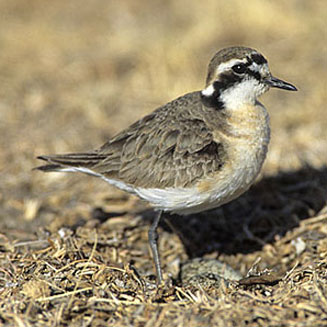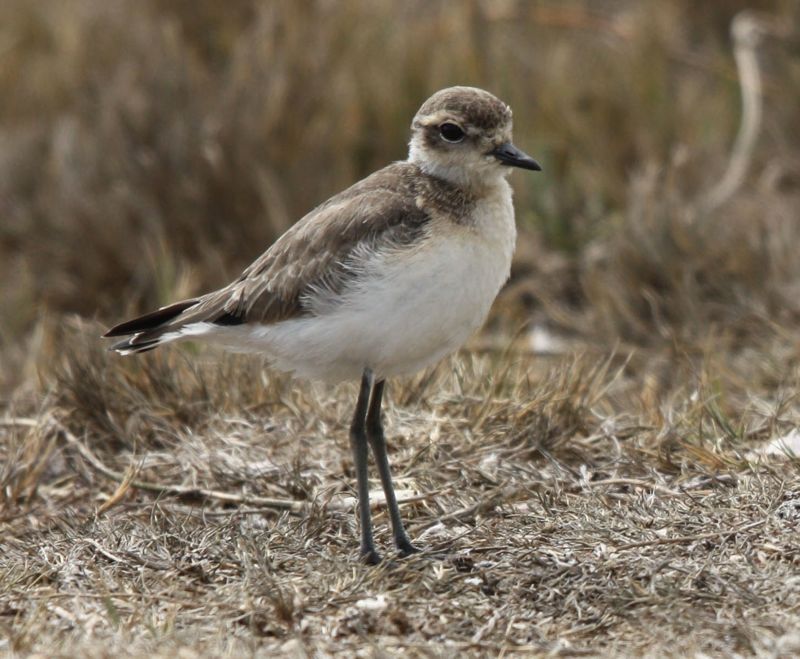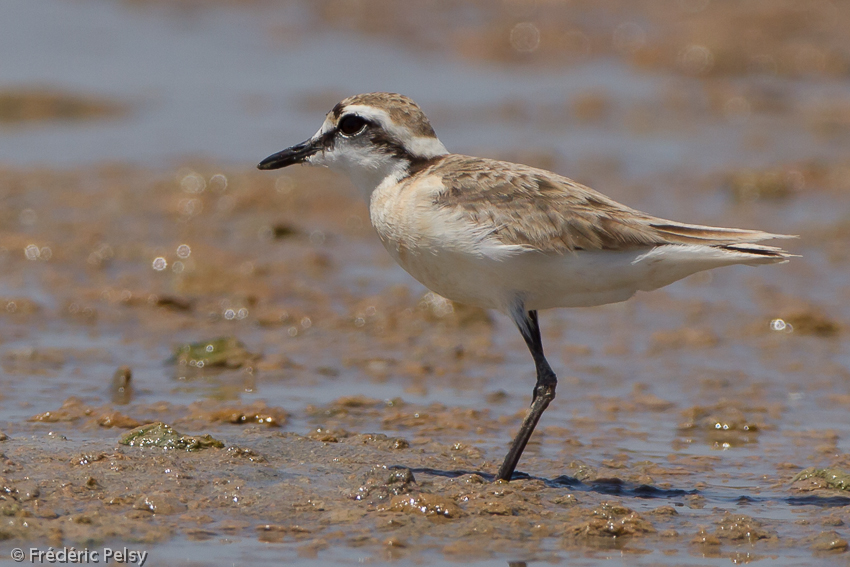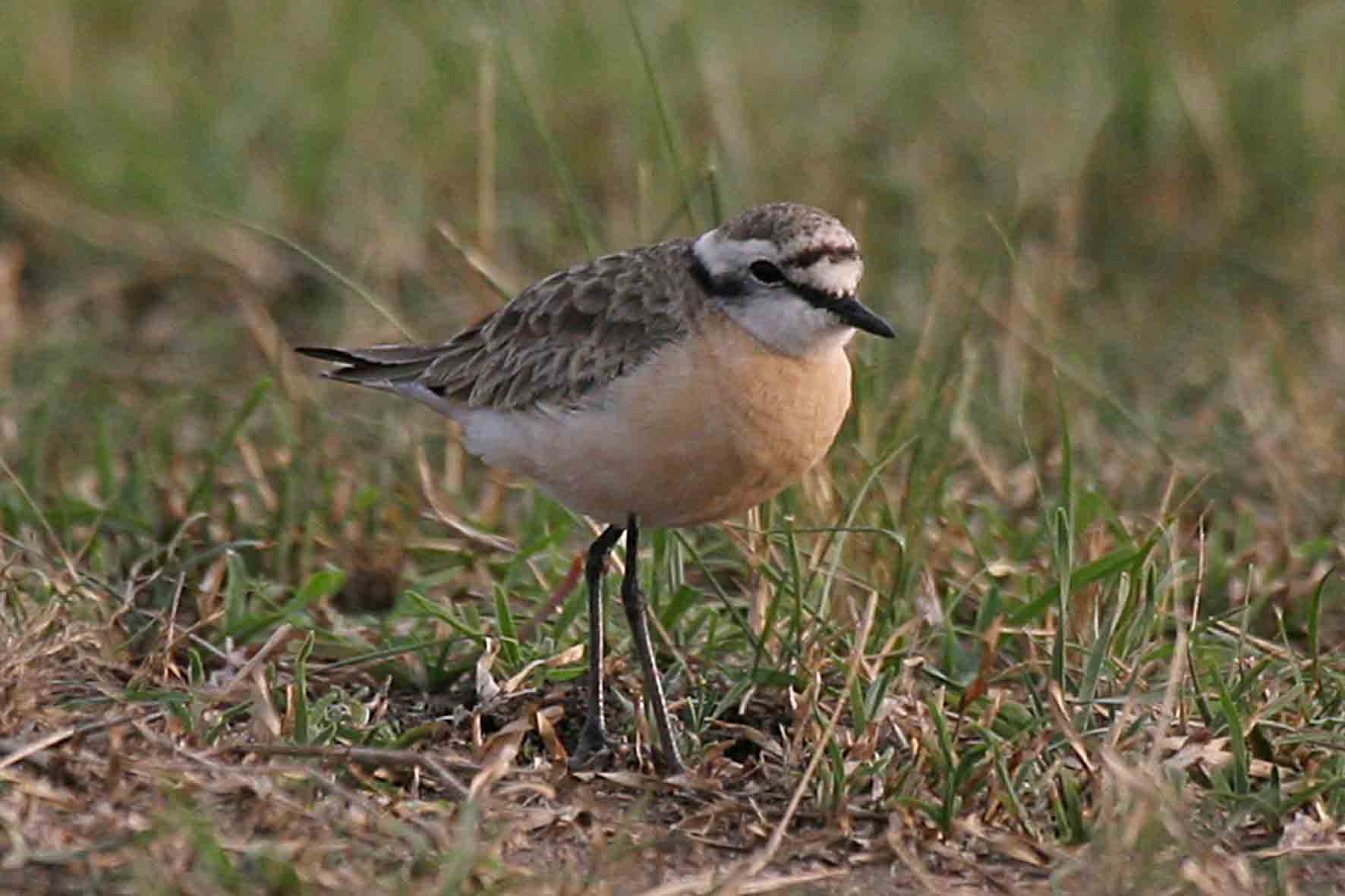
Charadrius pecuarius
SUBFAMILY
Charadriinae
TAXONOMY
Charadrius pecuarius Temminck, 1823; Cape of Good Hope.
Monotypic.
OTHER COMMON NAMES
English: Kittlitz’s sandplover; French: Pluvier patre, Pluvier de
Kittlitz; German: Hirtenregenpfeifer; Spanish: Chorlitejo
Pecuario.
PHYSICAL CHARACTERISTICS
5.25–6.5 in (13–16 cm); 0.67–1.7 oz (19–48 g). Characterized
by a white forehead delineated by a black frontal bar and
black line from bill to eye, which continues around the back
and side of the neck. Crown brown with sandy edges on the
feathers. Except for frontal bar, crown does not meet black
markings, leaving a white ring around sides and back of
crown. Upper dark brown with sandy feather edgings. Flight
feathers blackish. Bill black, legs black to greenish gray. Sexes
similar but black frontal bar less extensive and lighter in females.
In juveniles the head color is buff and brown instead of
black and white.
DISTRIBUTION
Africa and Madagascar.
HABITAT
Flat, exposed areas, including sand banks, mud banks, and dry
veld. Frequently found far from water, rarely on sandy or
rocky seashores.
BEHAVIOR
Usually in pairs, but in winter found in small flocks (usually
around 20 birds), but one flock of 270 reported. Often flocks
with wintering Calidris species. Concentration of birds during
non-breeding season are partially a result of receding water
levels. They are gregarious even in the breeding season. May
roost in mixed flocks or separately. Usually resident, but some
populations undergo poorly understood seasonal movements.
FEEDING ECOLOGY AND DIET
Often feeds in groups of two to five birds. As is typical of
plovers, it runs, stops, pecks, then runs on. It often pats its foot
on foraging surface. Commonly feeds on moonlit nights.
REPRODUCTIVE BIOLOGY
Somewhat gregarious in breeding season, sometimes nesting in
semi-colonial groups (nests as close as 26 ft [8 m] but usually at
least 59 ft [18 m] apart). Nest sites include sandy areas, sandy
patches in open grassland, dry mud, and even droppings of cattle
or horses. During copulation the male reportedly grabs the
female’s neck with his bill and falls onto his back, pulling the
female with him so she ends up on top with her legs in the air.
Two eggs are laid, and both sexes incubate and care for the
young. When leaving the nest unattended in the middle of the
day, or when disturbed, incubating bird quickly kicks sand over
the eggs or newly hatched chicks. May stand over eggs and/or
use belly soaking to cool eggs. Reportedly moves eggs up to 12
in (30 cm) in response to nest flooding. Incubation requires
about 25 days, and chicks fledge at about 30 days, although
brooding 42-day-old captive chicks have been observed. Both
adults give injury-feigning distraction displays and false brooding
when nest or young are threatened. One pair initiated a
second nest while caring for previous brood.
CONSERVATION STATUS
Common over much of the open habitat of Africa. Flooding is
major cause of egg and chick loss, but predation and motor vehicles
are also concerns.
SIGNIFICANCE TO HUMANS
None known.
Photo Gallery of - Kittlitz’s plover




 Animalia Life
Animalia Life